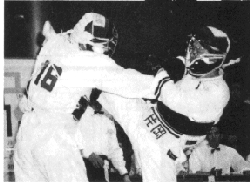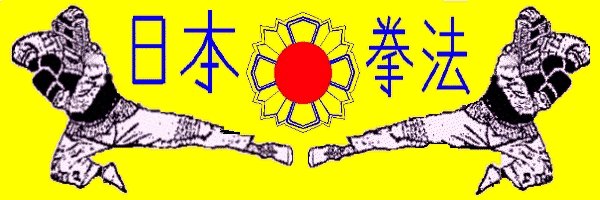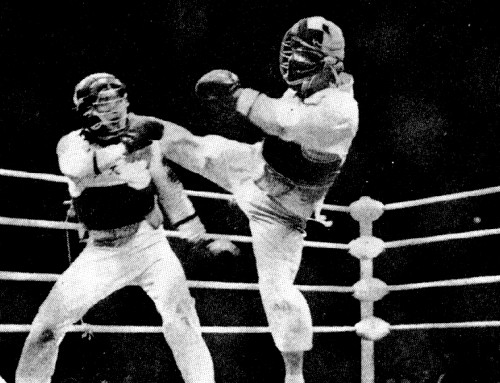| The philosophy of the Nihon Kenpo
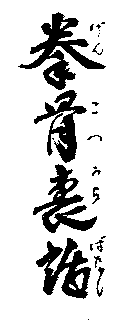 The buddhista monk, I base Michikazu, high preside of the Zen school, said :
" Calm in the heart, way of the rettitudine ".
The buddhista monk, I base Michikazu, high preside of the Zen school, said :
" Calm in the heart, way of the rettitudine ".
Also the monk Nansen Fugan answered in such a way to Choshu Osho which the question mark placed it
" What is the Way of the Lighting system ".
Such Via it is not the Way of the Budo ( martial or military arts ), of the
Sado ( art of tea ) or the Kado ( the art of the
disposition of the flowers ), but it is the " Way of the Buddha, the Lighting system of the Zen "
.
For that he regards the Way of the Budo, the one who that in spite of the difficulties succeeds to face the truth without
fear, without to get lost, impassive like a mirror, serenely, with la " calm in the heart ", comes
said " great master " ( Meijin ).
The greatest difference between budo and the other " ways " consist in the risk of the same life inborn in the first one.
In that way the comparison with the dead women and the risk of life can forge the humanity ?
In case such element lacked could not itself be spoken about budo.
The kempo fight is one body to body.
Such fight involves not only exercise and competition but also real combat between two athletes; this is the element
that can carry to consider kempo a dangerous activity.
Moreover eventual incidents or problems can make that most inexpert they form the wrong idea of excessive
dangerousness of this practical one.
The kempo, taken in examination from the practical point of view, it has been used from the Japanese Police like
technique in order to carry out arrests and from the land Forces of Self-defense like fight to hands knots.
This type of fight, when from art has become sport, has not been considered like one technical in order to land
the adversary but, through the competitions, the athletes train themselves with the maximum engagement and
try the best techniques than which they are in possession.
The adversary is not an enemy but rather a friend, a companion with which affinare the spirit of the budo.
When knowledge of the own ability is acquired, the ability is acquired to make attention and to curarsi of the
companions more weak people.
Giving to the due importance to the spirit of rationally dominated combat and using such fight like means of human
increase, I hope that it can be arrived, through the practical one, to acquire mastery total and to disclose a new
" Budo - Sport - Kempo ".
As far as the budo, the sport, the arts in a generalized manner, is not worth the saying
"
practised and will become Capable ".
Natural talent, mental force, physical force, stature, weight and other physical dowries are important.
Being to how much great master Daruma, considered said the father of the Zen and of the Kempo, it does not have to
expect a turned out data or a sure advantage but it is necessary to aim at the technique and the will, at the exercise;
in short, if persevera some good result is obtained.
Also to respect the Way, to improve the techniques.
The Japanese use a lot gladly ideogramma ( the second of the two who compose the word kempo ), that it is present
also in the aforesaid instruction.
He can himself be read in two ways,
" Do " and " Michi "
, and is also the same one that is used in order to write
Shinto ( Shintoismo ),
Budo ( Buddhismo ), Geido ( Arts ),
Budo ( martial arts like the Kendo, the Judo... ), moreover
Bushido ( the Way of the warrior ),
Shonindo ( the Way of the commerce ) and so on, practically the ways of the humanity.
When it is spoken about learning in the arts, the ideogramm is not used that it means " Art "
but what means" Via ".
it is essential to understand and to remember that of forehead to a difficulty the will is more important that the
acquaintance of the things.
Not to fear to mistake, to have the force to continue and to be brave: here what opens us the way of the future.
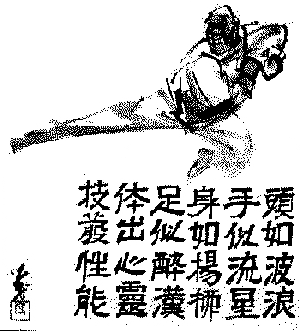
Here, expressing of continuation the essence of the kempo:
" OUR CREED "
We practice the kempo in order to cultivate and to temper with our forces the spirit of the Way of the
Virtue.
With ready mind to exchange again the courtesies with joy ( in order to serve the world and the men ) us employ with
all our forces for the peace of all the people.
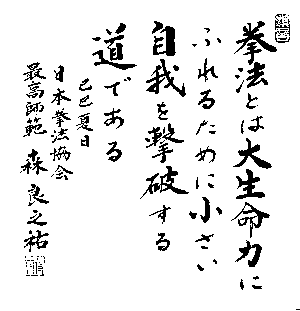
" JUST I "
The kempo it is a method in order to just destroy " I " for being able to touch
the true one to be able of the life.
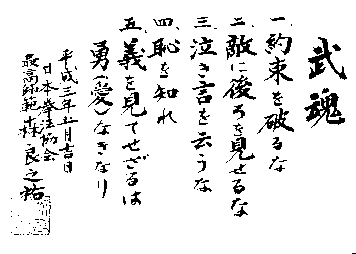
" THE SPIRIT OF THE KEMPO "
1) To always maintain the engagements.
2) not to turn the shoulders to the enemy.
3) Never to complain.
4) To have the sense of the shame.
5) To see the just sense follow indicate courage absence.
Master Sawayama disliked the preestablished or fixed movements and the conditioned glares inborn in the kata one
and invented the Rankeiko carried out with the armour wears.
Personally but I would want of the kata one been born from the exercise with the armour and not been born from one
deprived of hope fight; a kata fruit of rational studies but rather not to succeed to obtain of the useful techniques in a
real combat.
Moreover I aim to construct a kempo that not bases eclusivamente on the training with the armour.
" The kempo it sleeps in the nature of the man. Waking up do it. the Way is the
increase ".
( from " Nihon Kenpo " of Sawayama Sokai )
Following is instead an extract from " Kenpo Kyotei " of Ryonosuke Mori :
" The kempo it is the Way in order to enter in contact with own the great vital
force defeating the just small ego ".
" THE SIGNIFICANT SYMBOL OF THE KEMPO "
From here is certainly derived the our coat of arms that understands the ideogramm of " Heart "
(Kokoro ), " body " ( Tai ), " Spirit "
(Shin ), " Force " ( Chikara ), " Technique "
( Waza ), " Ability " (Jutsu ), " Rule "
( Ji ), " Way " ( Do ).
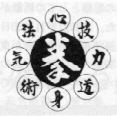
Among the things that has learned from the teacher, has remaind me particularly imprinted the admiration for his
philosophy of the kempo, feeling that I fed to the age in which I esteemed it and the I respected.
|
